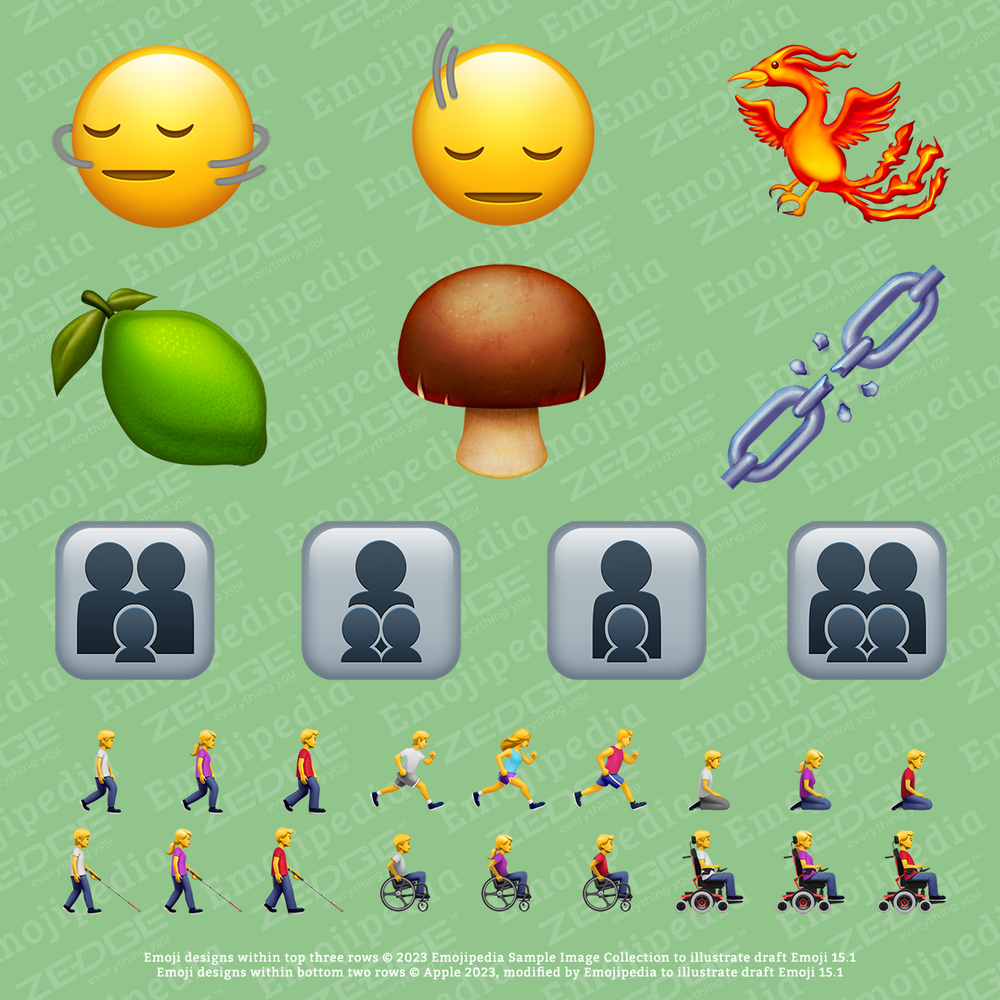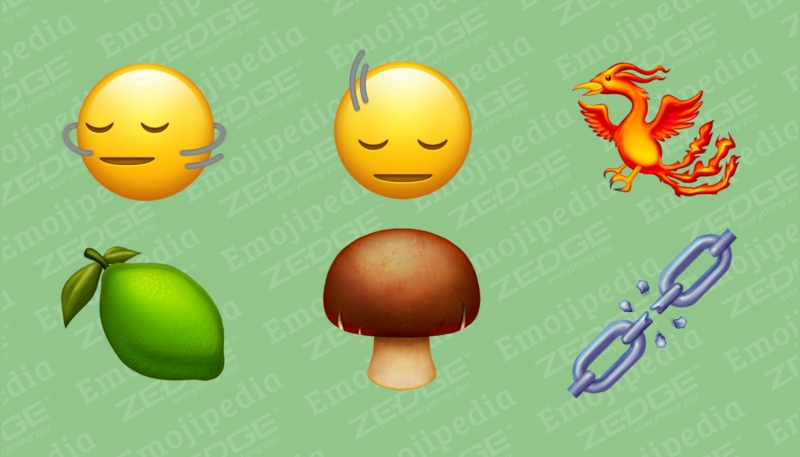“Attention, do not eat the brown mushrooms! You can, however, now use them in text messages!” Apple is finally adding promised new emojis into iOS 17.4, which had the first beta released earlier this week. The new beta includes the latest collection of glyphs approved in last fall’s Emoji 15.1 specification.
The approved Unicode 15.1 emoji include a phoenix, a lime, an edible mushroom, a shaking head vertically (as in a “yes” nod), a shaking head horizontally (a “no” head shake), and a broken chain.
The Unicode Consortium, which is responsible for ensuring character standards across multiple platforms, approves a major new character code standard each fall, including new emoji characters. Apple traditionally holds off adding new emojis until it gets most of its promised iOS features in place and has squashed any major bugs in the operating system. Apple is pretty much on schedule this time around, as it has added them in iOS 17.4. Previously, Apple debuted new emojis in iOS 14.5, iOS 15.4, and iOS 16.4.
New iOS 17.3 Emojis
Apple’s designers have taken a slightly different approach from what Emojipedia first previewed, which is normal. For instance, while the Emoji 15.1 displayed a Lime as basically just a green lemon, Apple is rendering it with an totally different look, showing it as a lime wedge rather than the entire lime.
Apple’s brown mushroom more resembles the mushrooms you’d find in Mario’s world than the one Emojipedia had in mind. Apple’s Phoenix Bird emoji is also more detailed and less cartoonish than the one portrayed by Emojipedia.

There are 118 new emojis on the way in iOS 17.4. However, most of the emoji are just variations of existing emojis. For the 108 people emoji, you can now switch the direction that they are facing (for example, a person walking facing right versus facing left). While there are 108 new directional emoji, most of the count consists of people emoji with multiple skin tones. The emoji expand on some existing emoji, such as a person walking, a person running, a person kneeling, a person with a white cane, a person in a manual wheelchair, and a person in a motorized wheelchair emoji, adding directions like left and right.
It should be noted that both the message sender and recipient must be using a device running an operating system that supports the same emoji standards. This means that if you’re running iOS 17.4 and the recipient is running iOS 17.3 the new emojis will not display correctly.
On the platforms, devices running Android 14 should have access to the new emojis, and Samsung’s One UI 6.0 devices can also properly display them.


